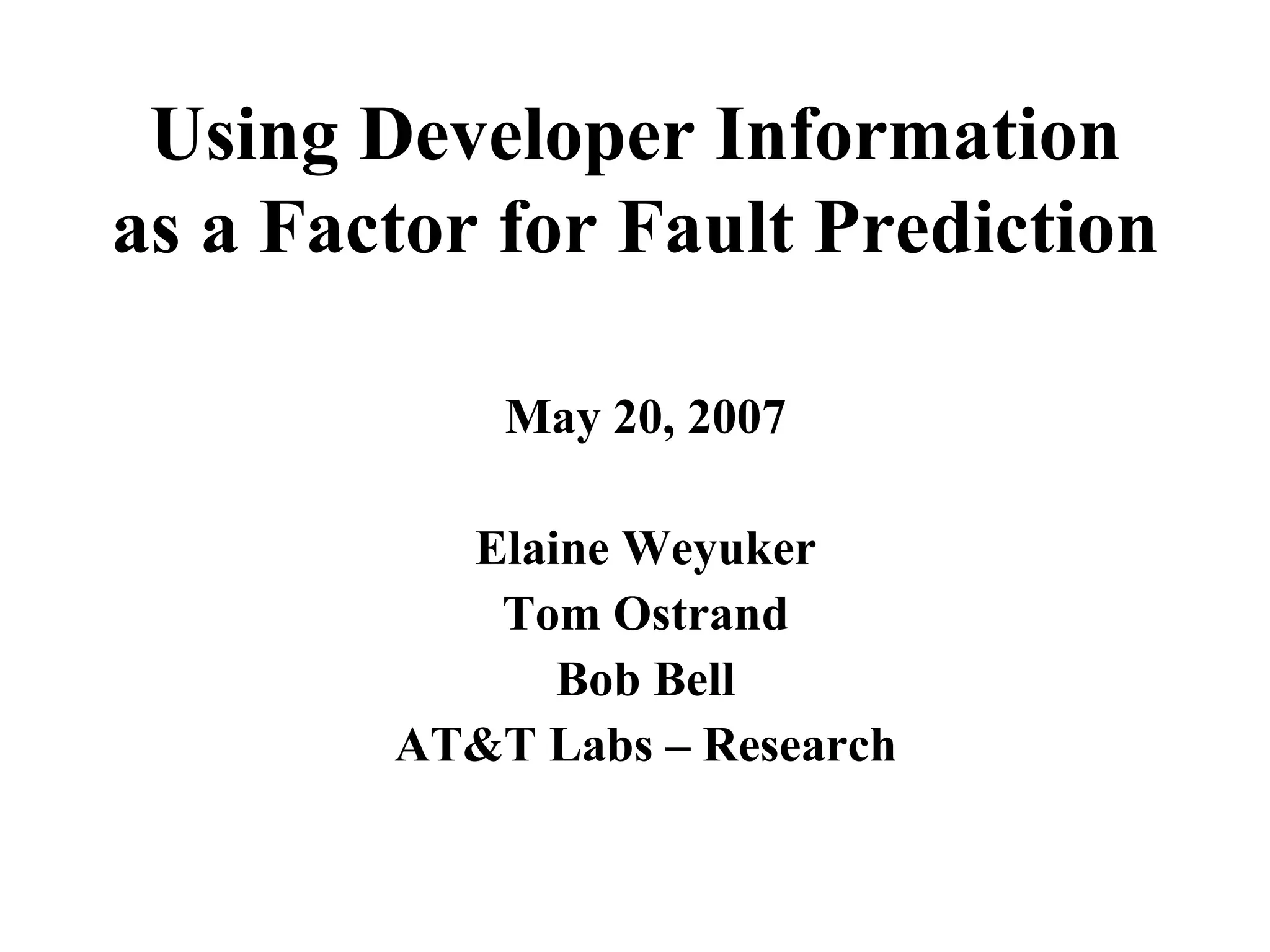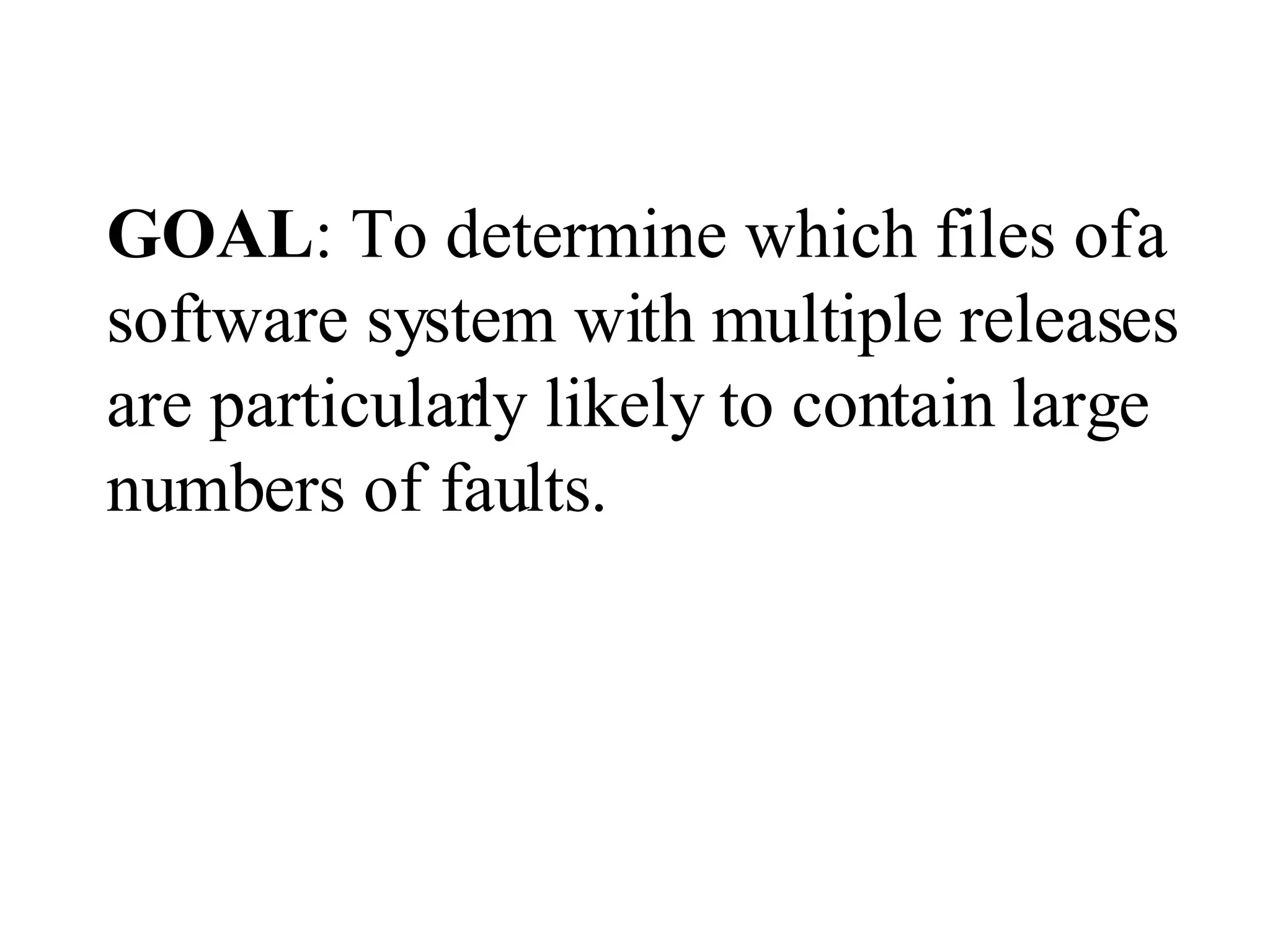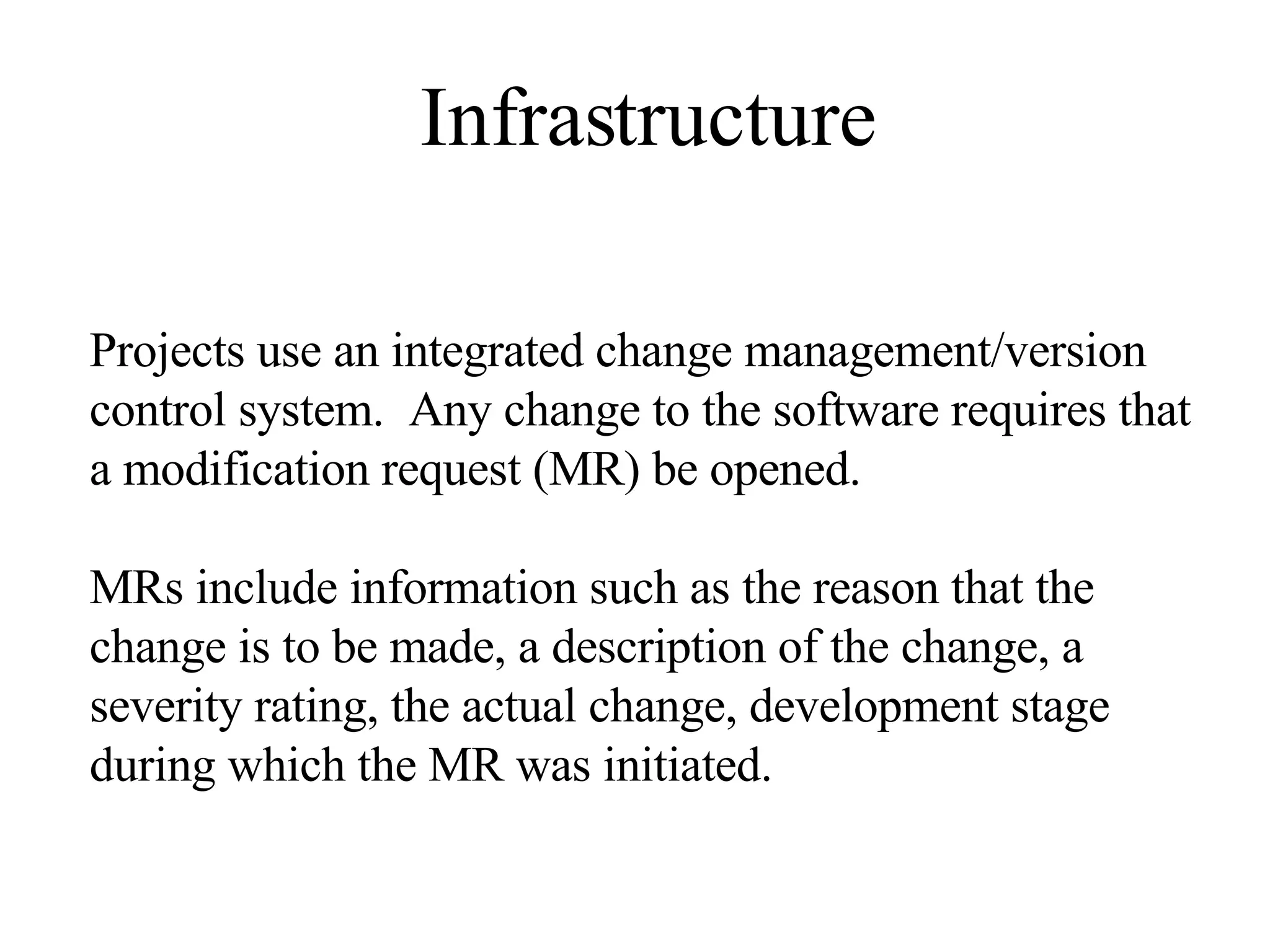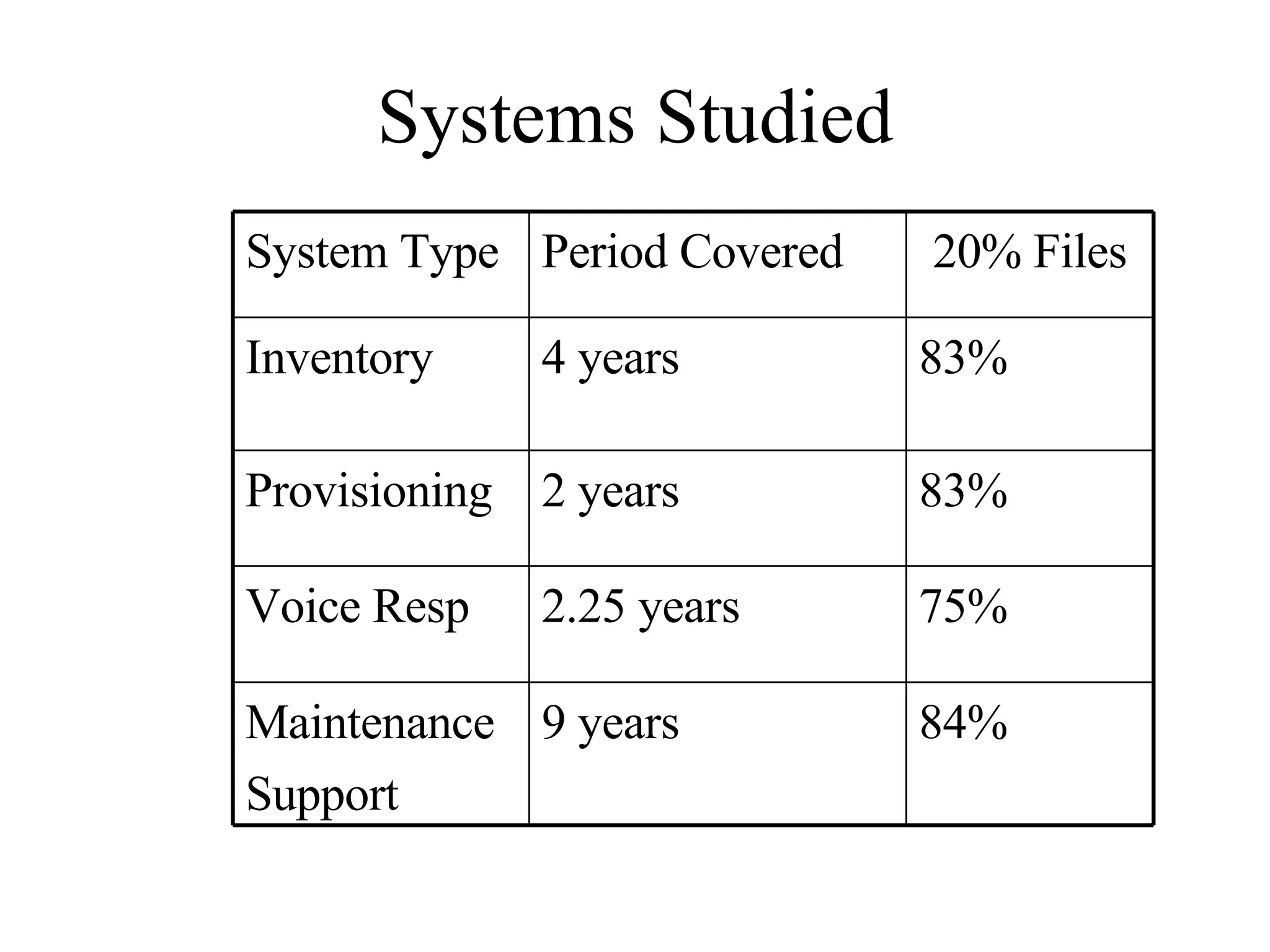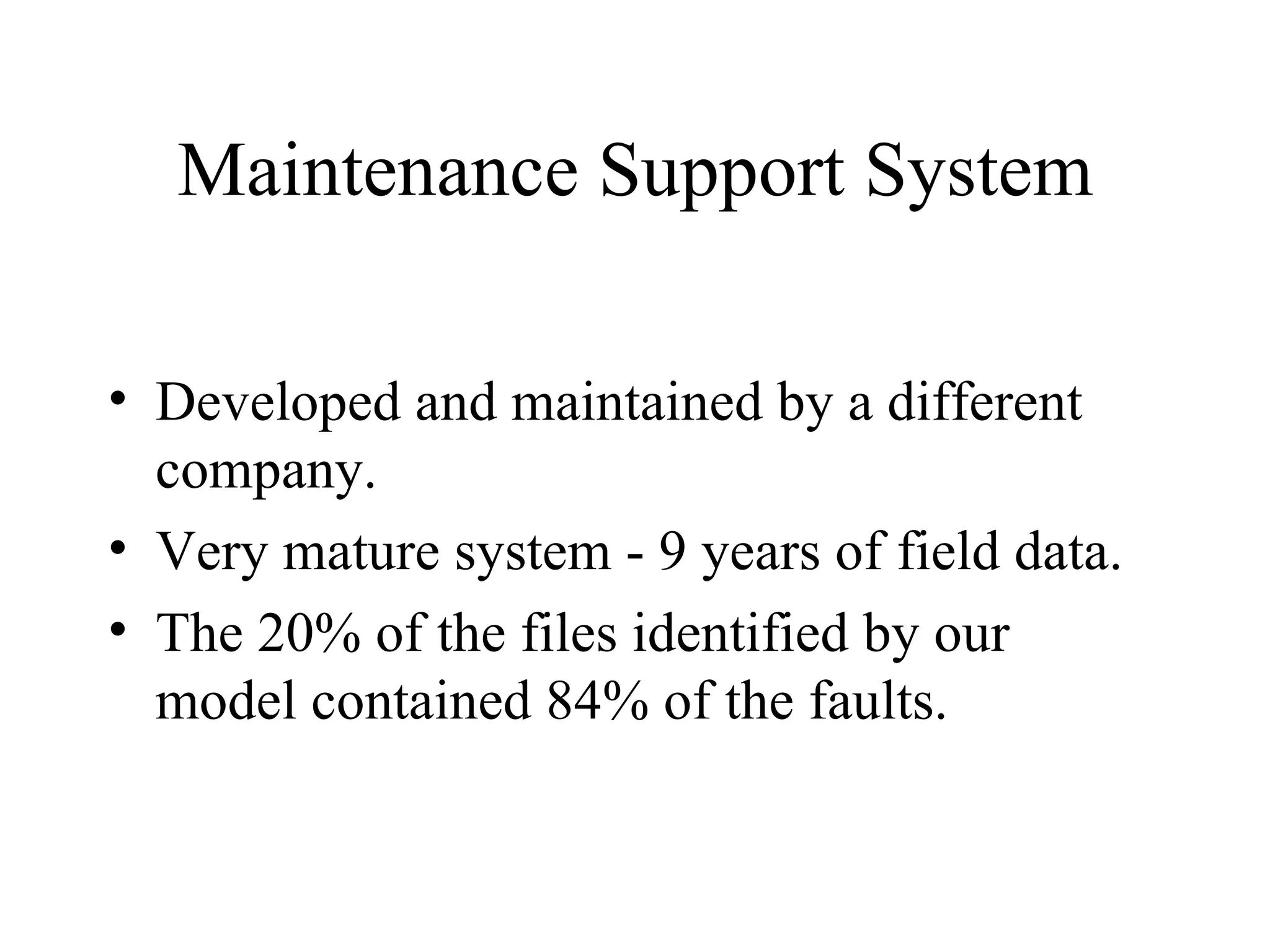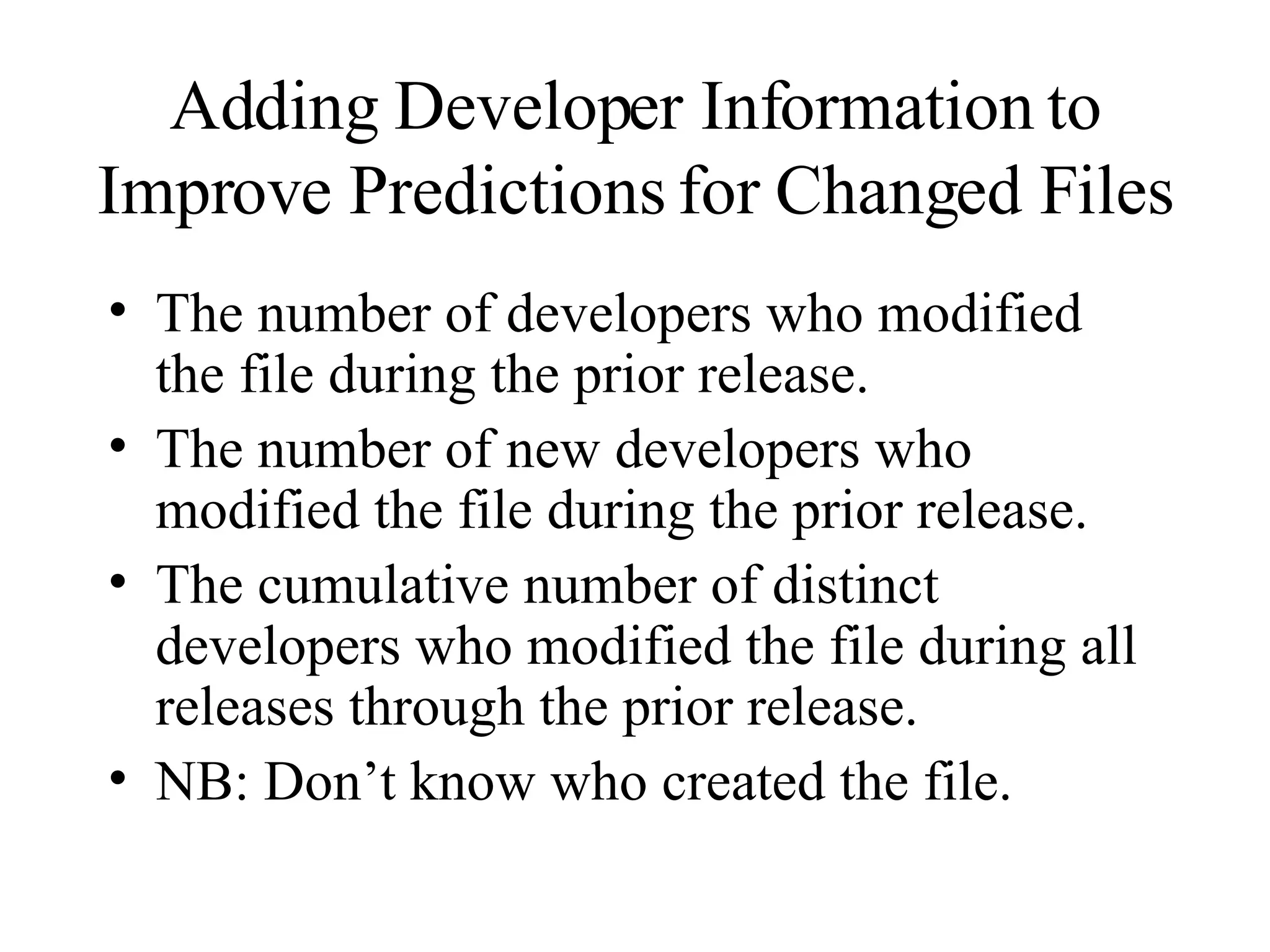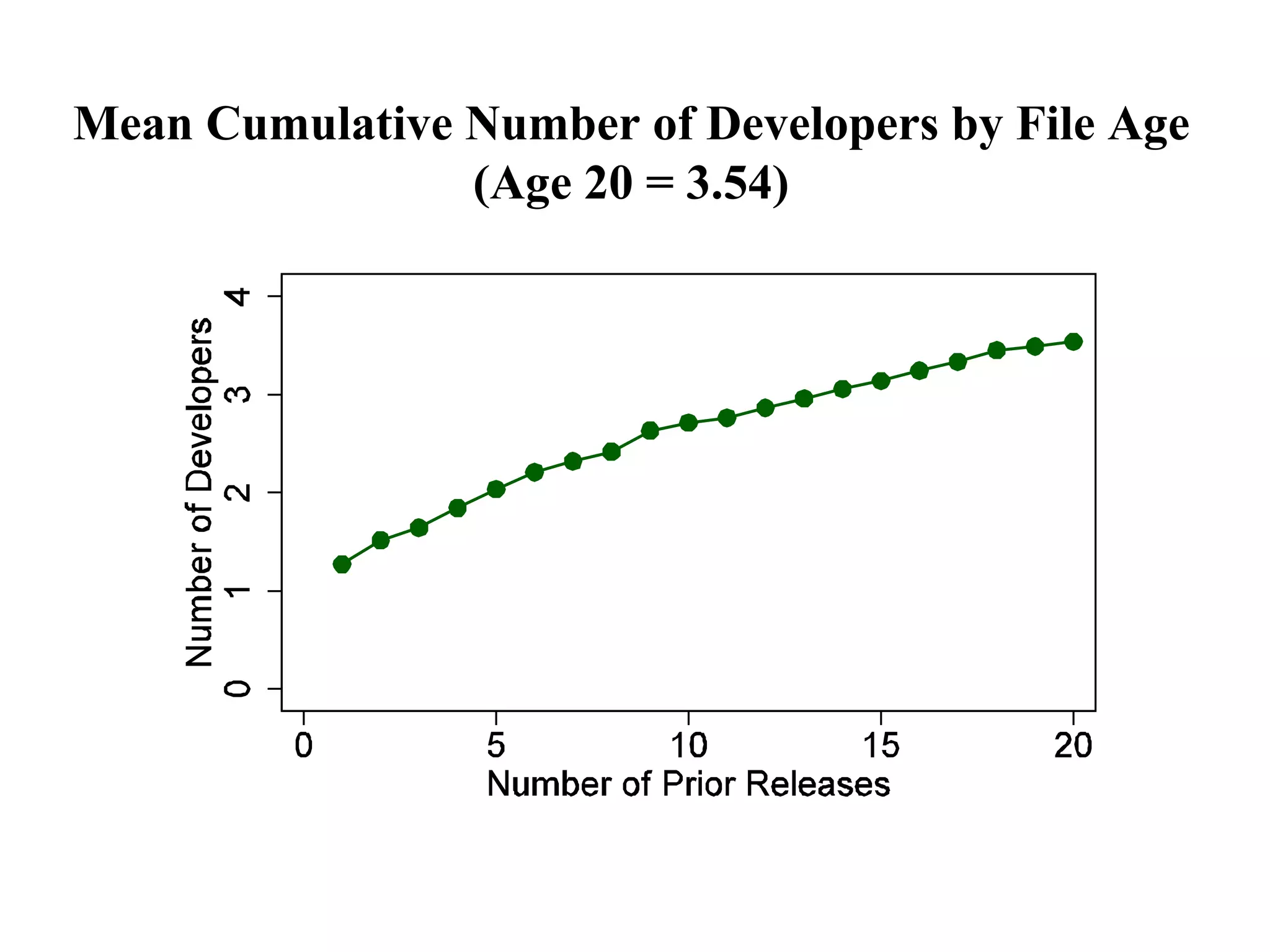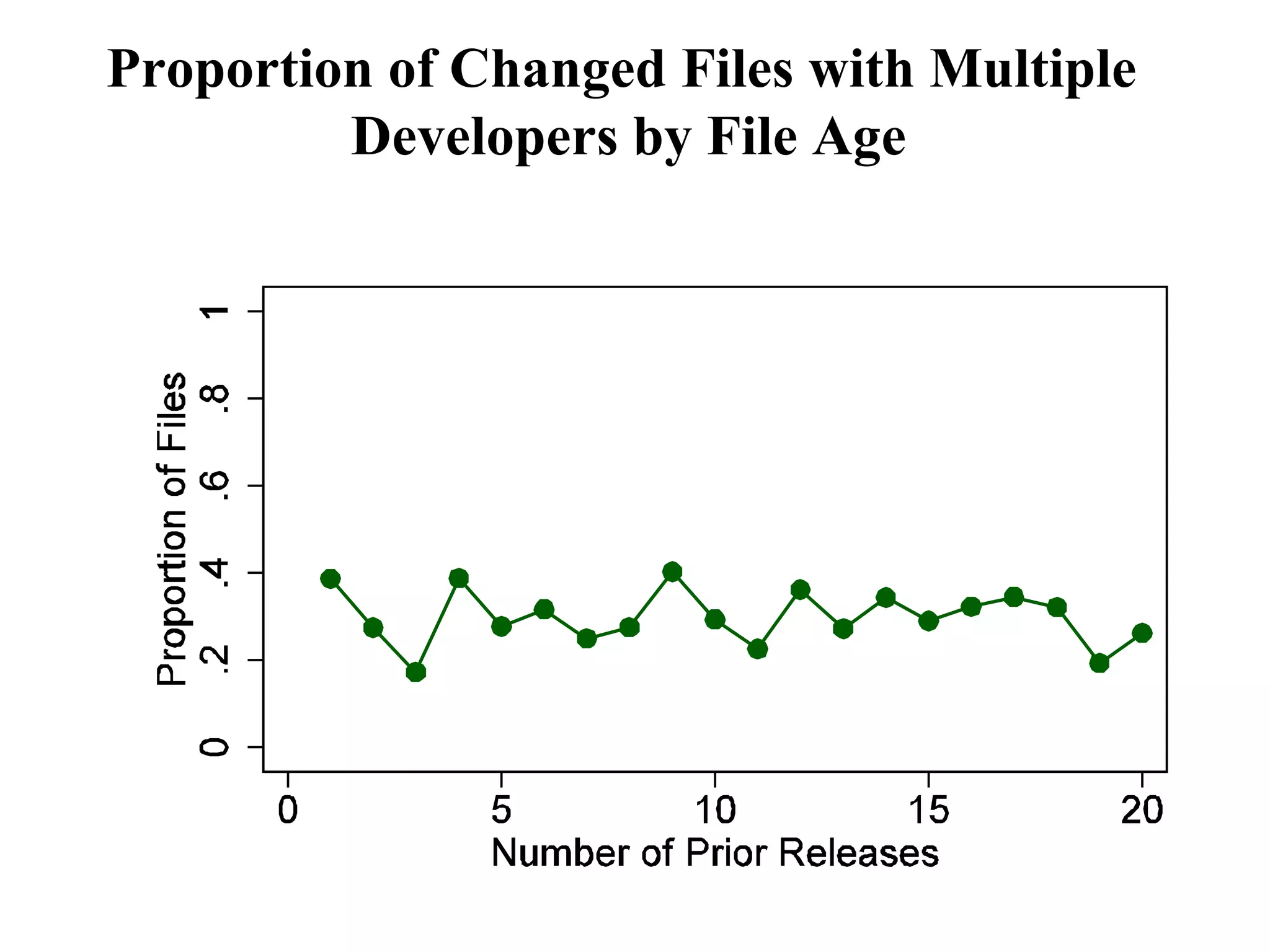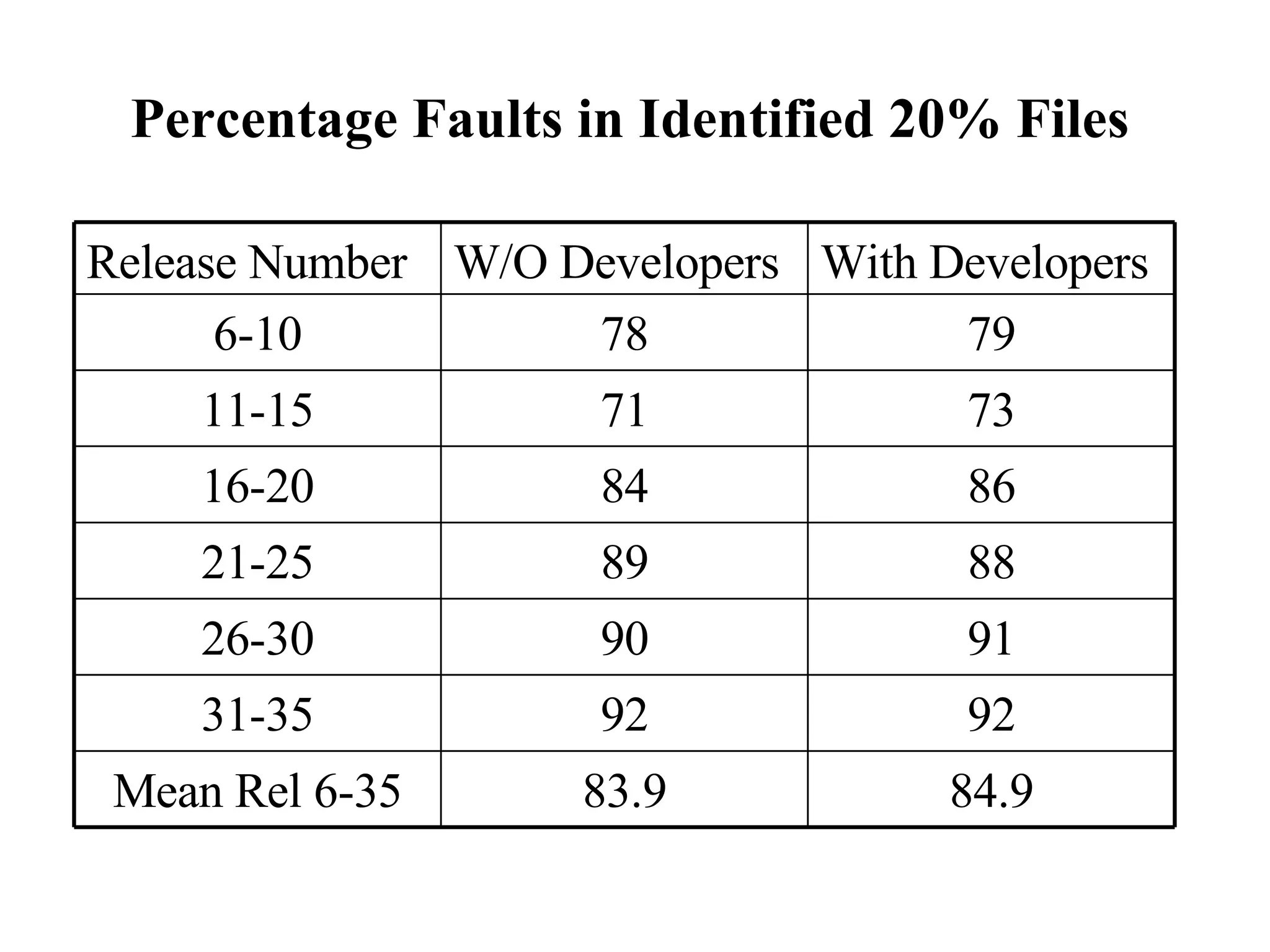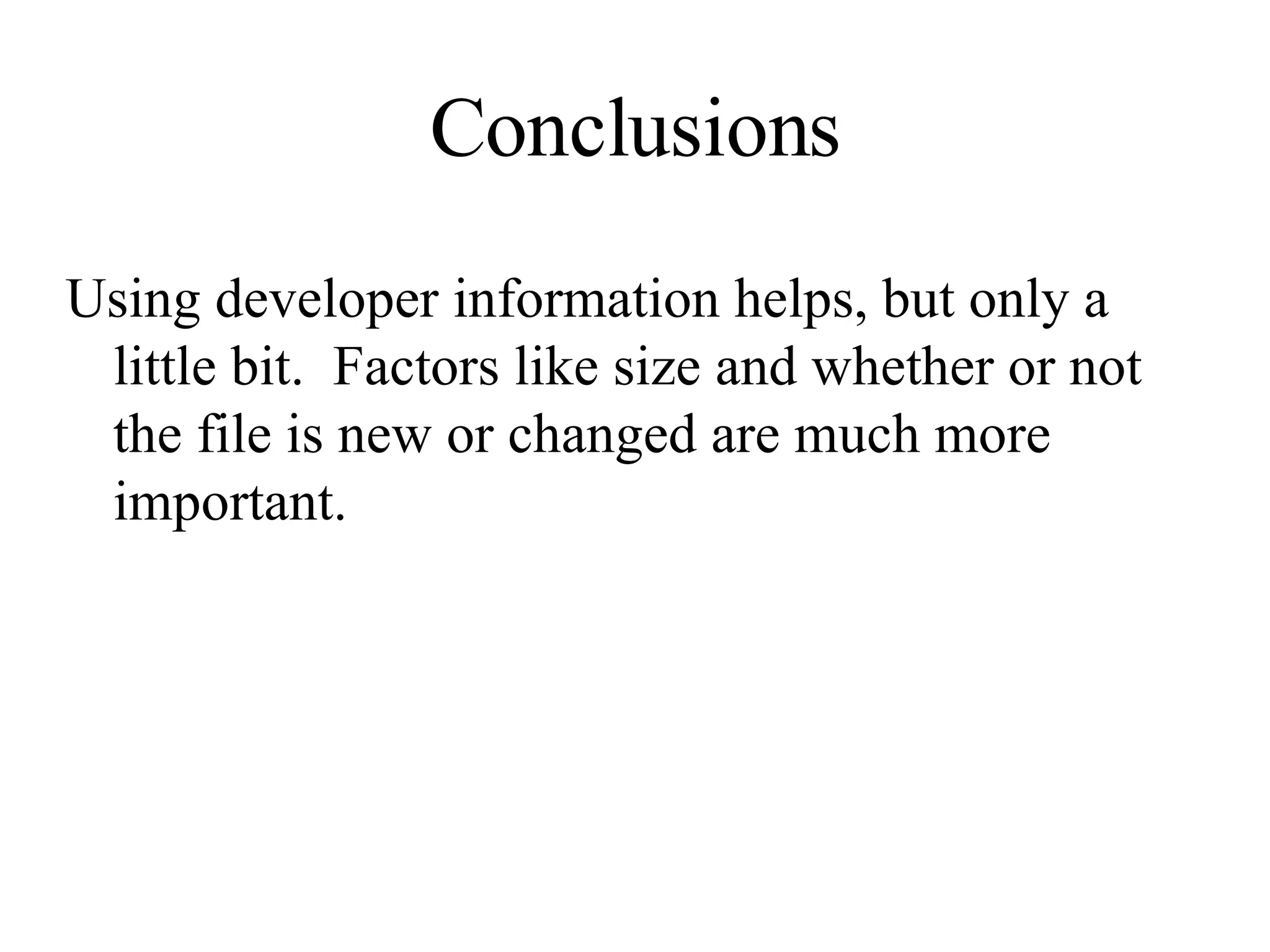The document discusses using developer information to improve fault prediction in software systems. It analyzes data from multiple releases of four different software systems totaling over 20 years of data. Adding variables related to the number of developers who modified a file and whether developers were new improves predictions slightly, but factors like file size and whether a file was new or changed are much more important predictors of faults. The best models using these factors identified the top 20% of files that contained over 80% of the faults on average.
